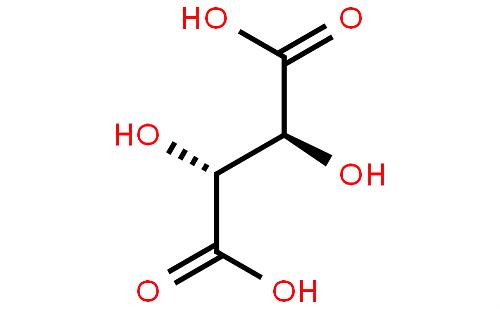Hemin: Pharmacological Effect in Inflammatory-Related Diseases and its Toxicity
General Description
Hemin serves a dual role in medicine, both as a treatment for porphyria and as a compound with implications in inflammatory-related diseases. In porphyria, hemin alleviates the deficiency in hemoprotein production by inhibiting delta-aminolevulinic acid synthase, stabilizing heme levels and reducing toxic precursors. Additionally, hemin induces heme oxygenase-1 (HO-1), which has protective and anti-inflammatory properties, thus showcasing its potential in treating inflammatory disorders. Conversely, following hemorrhagic stroke, excessive hemin can lead to neuronal damage through oxidative stress and depletion of crucial cellular resources, emphasizing the need for careful management in stroke contexts.

Figure 1. Hemin
Pharmacological Effect in Inflammatory-Related Diseases
Role in Porphyria Treatment
Hemin, also known scientifically as ferriprotoporphyrin IX chloride, plays a significant role in treating porphyria, a condition characterized by defective heme biosynthesis. In individuals suffering from porphyria, a lack of heme leads to inadequate production of hemoproteins and an accumulation of toxic heme precursors that can cause diverse health issues. Hemin alleviates this deficiency by inhibiting the activity of delta-aminolevulinic acid synthase, the initial enzyme in the heme synthesis pathway. As a result, hemin treatment effectively reduces the concentration of porphyrins and their toxic precursors, thereby stabilizing hemoprotein levels. This stabilization is crucial for mitigating the biological abnormalities associated with porphyria, enabling a more normal physiological state in affected patients. Therefore, hemin not only provides immediate therapeutic relief but also addresses long-term health concerns related to porphyria. 1
Induction of Heme Oxygenase by Hemin
Recent studies have highlighted hemin’s ability to induce the expression of heme oxygenase (HO), particularly the HO-1 isoenzyme, which plays a pivotal role in heme catabolism. HO-1 is known for its protective, anti-inflammatory, and antioxidant properties, making it crucial in various physiological processes. Hemin activates HO-1 by modulating key regulatory factors, enhancing cellular defense mechanisms against oxidative stress and inflammation. This induction is closely linked to hemin's interaction with the nuclear factor erythroid 2-related factor 2 (Nrf2), which promotes HO-1 expression while simultaneously inactivating its repressor, Bach1. The ability of hemin to drive HO-1 expression suggests that it can serve as a potential therapeutic agent in conditions characterized by excessive inflammation or oxidative damage. 1
Promise in Inflammatory-Related Disorders
The implications of hemin in managing inflammatory-related diseases are increasingly being recognized, especially given its association with elevated levels of HO-1 in various inflammatory conditions such as colitis. Hemin has shown promise in clinical and preclinical studies, as it significantly boosts HO-1 expression in macrophages and relevant epithelial cells during inflammatory responses. This suggests that hemin could have valuable applications in treating a range of inflammatory disorders, particularly those characterized by enhanced oxidative stress and inflammation. As research continues to unveil the complex interplay between hemin and immune modulation, it may pave the way for innovative therapeutic strategies that harness hemin's pharmacological effects for better management of inflammatory diseases. Thus, hemin emerges not just as a treatment for porphyria, but as a promising candidate in the broader context of inflammatory physiology. 1
Toxicity
Hemin Toxicity and Brain Damage After Hemorrhagic Stroke
Hemin, a breakdown product of hemoglobin, poses a significant risk following a hemorrhagic stroke, contributing to secondary brain damage that can persist for weeks. The toxicity of hemin is exacerbated by the large amounts that can be released from hemoglobin in a hematoma, commonly reaching concentrations around 10 mM. While serum proteins such as hemopexin and albumin can bind to hemin, their protective capacity is often insufficient against the excessive hemin levels present after a hemorrhage. The entry of hemin into brain cells can result in various harmful biochemical processes, including the release of redox-active iron, which exacerbates oxidative stress. Additionally, hemin leads to the depletion of critical cellular resources such as NADPH and glutathione, which are necessary for maintaining cellular health. The production of harmful reactive species, including superoxide and hydroxyl radicals, further contributes to membrane lipid peroxidation and overall neuronal damage, highlighting hemin's profound toxicity in this context. 2
Heme Oxygenase Interaction and Neuroprotective Mechanisms
The heme oxygenase (HO) system plays a dual role in hemin toxicity, particularly in the context of a hemorrhagic stroke. While the activity of heme oxygenase-1 (HO-1) is associated with protective effects under various conditions, its role becomes detrimental when excessive hemin is present. HO-1 contributes to the breakdown of hemin into biliverdin, carbon monoxide, and ferrous iron; however, the disproportionate release of free iron can overwhelm cellular antioxidant defenses, leading to increased levels of reactive oxygen species (ROS) and subsequent neuronal death. Although HO activity often provides neuroprotection in other pathological scenarios, excessive hemin levels in hemorrhagic strokes can compromise cellular viability. Furthermore, the consumption of NADPH during hemin degradation may impair glutathione recycling, exacerbating oxidative stress. This connection explains why astrocytes, which are more resilient to hemin due to their better access to glucose and oxygen, may be less impacted by hemin-induced toxicity compared to neurons. Thus, strategies focused on managing hemin levels and the activity of heme oxygenase could play a crucial role in mitigating brain damage following hemorrhagic stroke. 2
References:
[1] ESTARREJA J, CALDEIRA G, SILVA I, et al. The Pharmacological Effect of Hemin in Inflammatory-Related Diseases: A Systematic Review[J]. ACS Applied Electronic Materials, 2024, 9: Page 2527 to 2798. DOI:10.3390/biomedicines12040898.[2] STEPHEN R ROBINSON. Hemin toxicity: a preventable source of brain damage following hemorrhagic stroke.[J]. Redox Report, 2009, 14 6. DOI:10.1179/135100009X12525712409931.
See also
Lastest Price from Hemin manufacturers

US $1.00/g2025-06-02
- CAS:
- 16009-13-5
- Min. Order:
- 1g
- Purity:
- 0.99
- Supply Ability:
- 20 tons

US $10.00/KG2025-04-21
- CAS:
- 16009-13-5
- Min. Order:
- 100KG
- Purity:
- 99%
- Supply Ability:
- 100 mt


